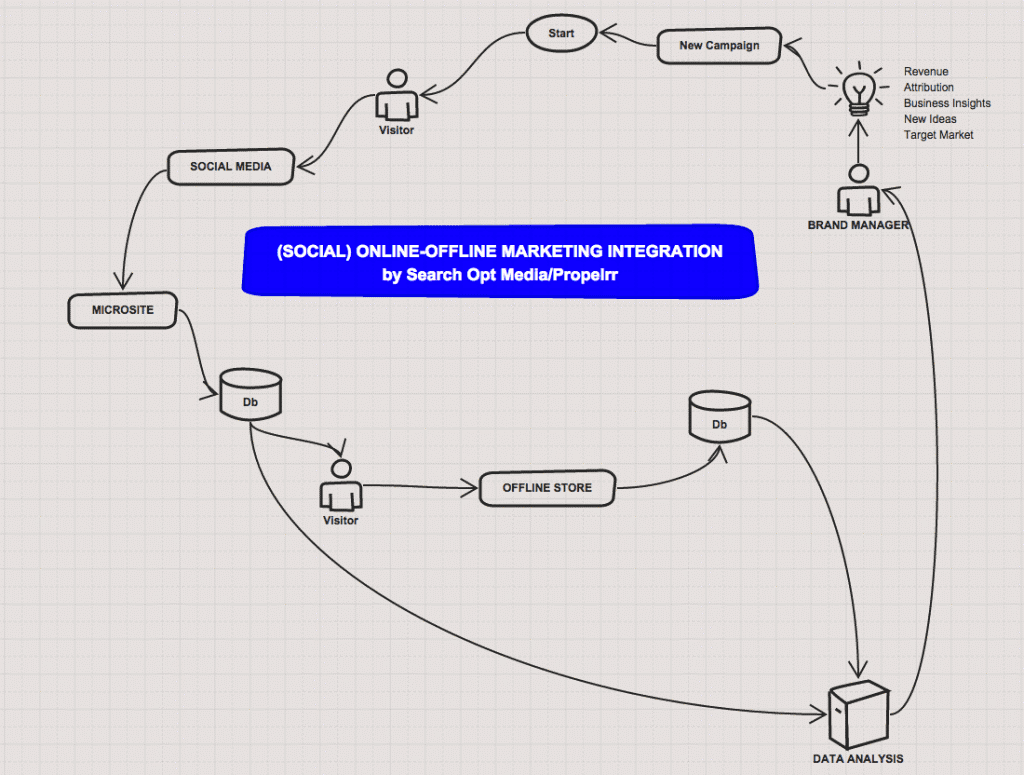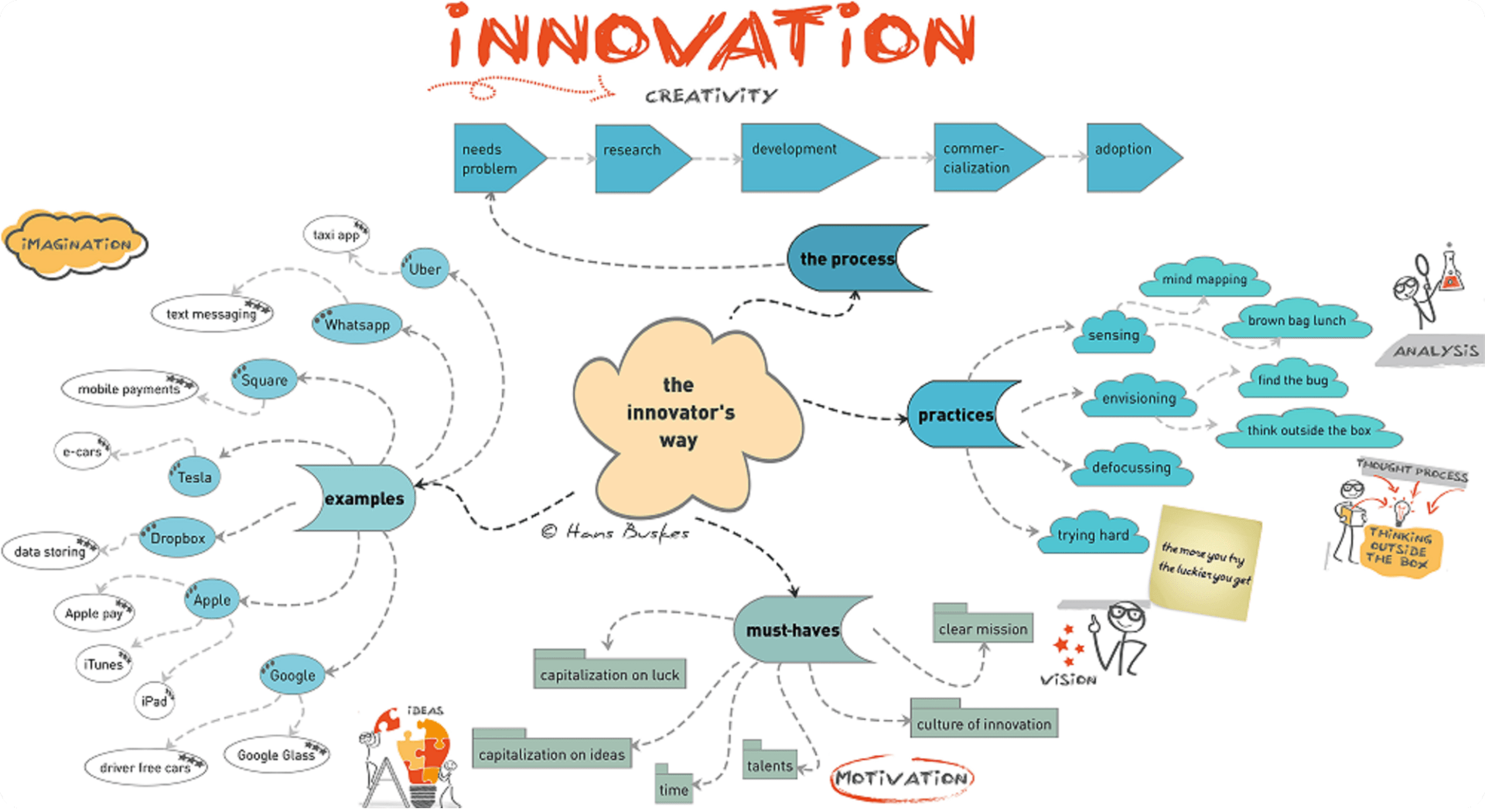Contemporary marketing no longer leaves room for copycats. The only way to stay at the top of the pack is to deliver real value to your consumers through business innovation. Whether you’re a multinational or a growing startup, imitating your competitors is not only unsustainable, it’s detrimental to your business. It’s a band-aid solution to your current pain points, but won’t actually foster long-term growth. Today, companies and consumers only want to involve themselves with innovators. It’s all about the next big idea. So, what does your business have to do to stay ahead?
Technology, culture, and consumer needs are constantly changing. While traditional marketing methods have proved effective, innovation calls for integration. The chasm between offline and online seems to be growing only larger when they should really be seamlessly working together towards your bottom line. Smart Insights reports Content Marketing at 29.6% and Big Data at 14.6% as the top digital marketing trends for 2015. In fact, brands already need to be thinking about the face of marketing in 2020. If your business has yet to even explore these elements of digital, you may already be severely lagging behind. Don’t fret, here are seven ways to innovate your current business marketing efforts.
Developing a Closed Loop Uber Funnel
While some brands are already riding the waves of innovation by delving into e-commerce, it’s undeniable that most still rely on sales generated through physical stores. If this is you, it may be time to seriously rethink how your brand is using digital. Soloing your online and offline marketing efforts is outdated, and nonlinear marketing is the first stepping stone to staying ahead. Propelrr has created a diagram of a closed-loop uber funnel, which serves as a guide for tying traditional and digital marketing to drive revenue.

Working Your Way Towards Multi-channel Attribution
Jeff Beer of Fastcocreate says, “Perfect end-to-end attribution will remain an industry white whale.” In fact, it is one of the attributions that marketers have been chasing for at least 80 years. For what seems like forever, companies have relied on correlation and educated guesses but have never been quite sure on how their billboards and print ads have contributed to campaigns.
Contrary to this, you might say that digital marketing has been proven to provide accurate data, and you’re right. It’s actually multi-channel attribution that innovators have been after, and which only a few, forward-thinking companies have been able to achieve. If you want to stay authentic and ahead of the curve, you’ll need to have the diligence to know where your marketing spend is going and how it’s adding to your revenue. Invest in finding out how both your ad in yesterday’s newspaper and the PPC campaign you launched weeks ago, are related to your product, which your consumer just bought in-store.
Always Think Mobile-First
Right about now, you must be thinking “What? Mobile-first? Isn’t that a given already?” Well, despite the familiarity it brings, many brands have yet to capitalize on mobile devices as the “first screen.” Yes, while a few years back, smartphones or tablets were considered an add-on, they’re now the primary platform for media consumption. By branching out and being where your customers choose to be, you’re not only developing more strategic relationships but more authentic ones, too.
More than that, this digital marketing trend won’t be dying out anytime soon. So, what does this mean for your brand? Innovation is required on all fronts. Brands must start modifying the way they do things — from strategy to segmentation, UX design to analytics, and SEO to social.
While at innovation, check this out: Define your marketing strategy using this Marketing Plan Mind Map
 Explore Emerging Social Networks
Explore Emerging Social Networks
The words “social network” are almost always associated with Facebook. While this multibillion-dollar company reigns supreme, the world’s plethora of developers and startups are attempting to recreate its success. The product? Twitter, Instagram, Pinterest, Snapchat, Cymbal, Polyvore, Wanelo — the list is endless. However, brands might ask themselves if it’s even worth it to be on these new channels. Despite posing great potential for marketing innovation, they may not have the advertising or analytics capacity that more developed platforms hold.
Setting sail on uncharted waters will always include risks, but being a first-mover can pay off big-time if the conditions are just right. The Next Web categorizes these emerging channels into two: Social Commerce Platforms such as Polyvore, and Visual Sharing Platforms like Vine. While they may not be the right platform for all businesses, they can be an authentic and powerful way to engage consumers, depending on your target audience.
Invest in User-Generated Content
Speaking of social, Forbes has defined User Generated Content (UGC) as one of the top 10 trends driving the future of marketing. Whether it’s a review on Yelp!, or an Instagram post, you will have less say over what’s being said about your brand online. It can be difficult to accept for some, but the branded content has been decreasing in effectivity.
Today, companies must understand that they have less control over the content. Your brand image is highly dependent on the genuine relationships you’ve forged with your consumers. A brand’s most loyal advocates can also be its strongest advertisers. This is why creating deep, authentic relationships with your consumers has become more important than ever. More importantly, this means brands must innovate in terms of marketing by investing in User Generated Content.
Have nothing to hide
Ironically, the most authentic way to innovate your marketing efforts is to simply be, well, authentic. In this Information Age, customers have become more intelligent and consequently, their expectations have risen even higher. They know sales talk when they see it, and they hate it. Today, only the most genuine of brands can capture both hearts and sales. Both businesses and consumers are looking for long-term relationships, not one-night-stands, and authenticity breeds loyalty.
One great example is labeling products “fat-free” when they were actually loaded with sugars. This was acceptable in the past and was even effective. Today, this kind of misleading marketing no longer flies with the modern buyer. According to Entrepreneur, by empowering their customers to make better choices through easy access to product information, it is now companies like Whole Foods who are winning. By giving consumers greater control over their choices, you also foster greater trust and greater sales.
To conclude, business innovation is necessary for a company to survive, and thrive, in this modern, fast-paced world. However, this doesn’t mean that you need to be constantly creating new products, or reorganizing company structure. Being inventive only requires a fresh perspective, a new way of seeing and doing things that have already been done before. Whether your brand is working its way to being more consumer-centric, or putting multi-channel attribution tools in place, its authenticity, creativity, and ingenuity, that seals success.
About the author
Anna Rodriguez is a manager and a passionate writer. She also has a varied background in real estate brokerage, investing, online marketing, and social media management. She owns Homey Guide Blog. Follow her at @annrodriguez021


 Explore Emerging Social Networks
Explore Emerging Social Networks

